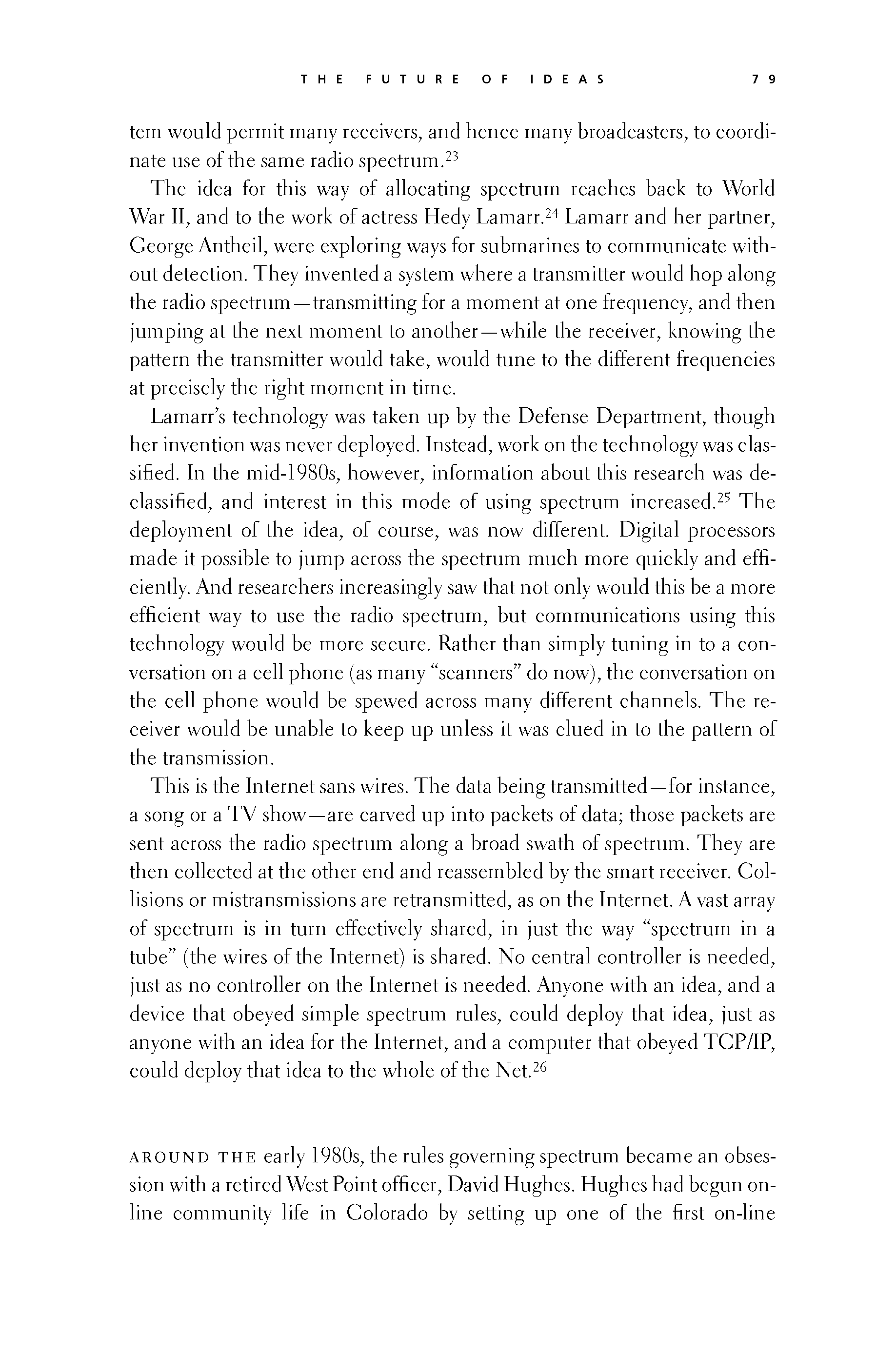 p078 _
-chap- _
toc-1 _
p079w _
toc-2 _
+chap+ _
p080
p078 _
-chap- _
toc-1 _
p079w _
toc-2 _
+chap+ _
p080
tem would permit many receivers, and hence many broadcasters, to coordi-
nate use of the same radio spectrum.[5-23]
The idea for this way of allocating spectrum reaches back to World
War II, and to the work of actress Hedy Lamarr.[5-24] Lamarr and her partner,
George Antheil, were exploring ways for submarines to communicate with-
out detection. They invented a system where a transmitter would hop along
the radio spectrum -- transmitting for a moment at one frequency, and then
jumping at the next moment to another -- while the receiver, knowing the
pattern the transmitter would take, would tune to the different frequencies
at precisely the right moment in time.
Lamarr's technology was taken up by the Defense Department, though
her invention was never deployed. Instead, work on the technology was clas-
sified. In the mid-1980s, however, information about this research was de-
classified, and interest in this mode of using spectrum increased.[5-25] The
deployment of the idea, of course, was now different. Digital processors
made it possible to jump across the spectrum much more quickly and effi-
ciently. And researchers increasingly saw that not only would this be a more
efficient way to use the radio spectrum, but communications using this
technology would be more secure. Rather than simply tuning in to a con-
versation on a cell phone (as many "scanners" do now), the conversation on
the cell phone would be spewed across many different channels. The re-
ceiver would be unable to keep up unless it was clued in to the pattern of
the transmission.
This is the Internet sans wires. The data being transmitted -- for instance,
a song or a TV show -- are carved up into packets of data; those packets are
sent across the radio spectrum along a broad swath of spectrum. They are
then collected at the other end and reassembled by the smart receiver. Col-
lisions or mistransmissions are retransmitted, as on the Internet. A vast array
of spectrum is in turn effectively shared, in just the way "spectrum in a
tube" (the wires of the Internet) is shared. No central controller is needed,
just as no controller on the Internet is needed. Anyone with an idea, and a
device that obeyed simple spectrum rules, could deploy that idea, just as
anyone with an idea for the Internet, and a computer that obeyed TCP/IP,
could deploy that idea to the whole of the Net.[5-26]
///\\\
Around the early 1980s, the rules governing spectrum became an obses-
sion with a retired West Point officer, David Hughes. Hughes had begun on-
line community life in Colorado by setting up one of the first on-line
[[79]]
p078 _
-chap- _
toc-1 _
p079w _
toc-2 _
+chap+ _
p080